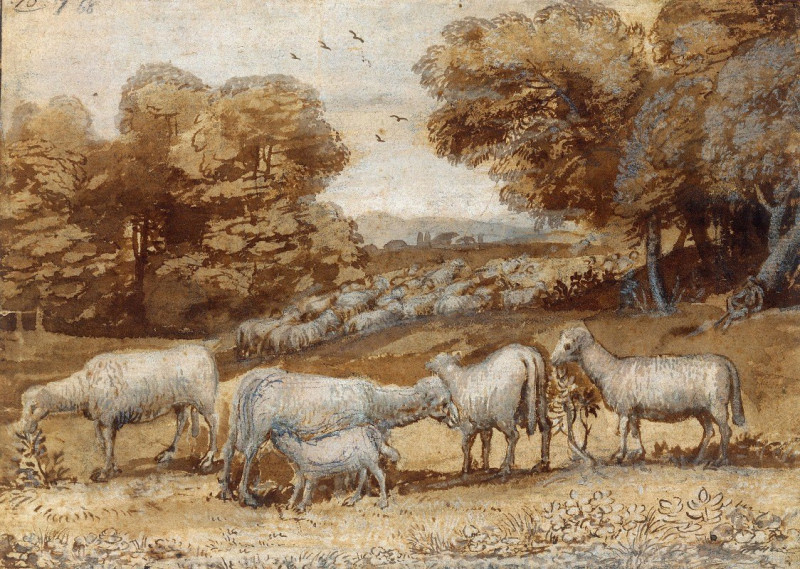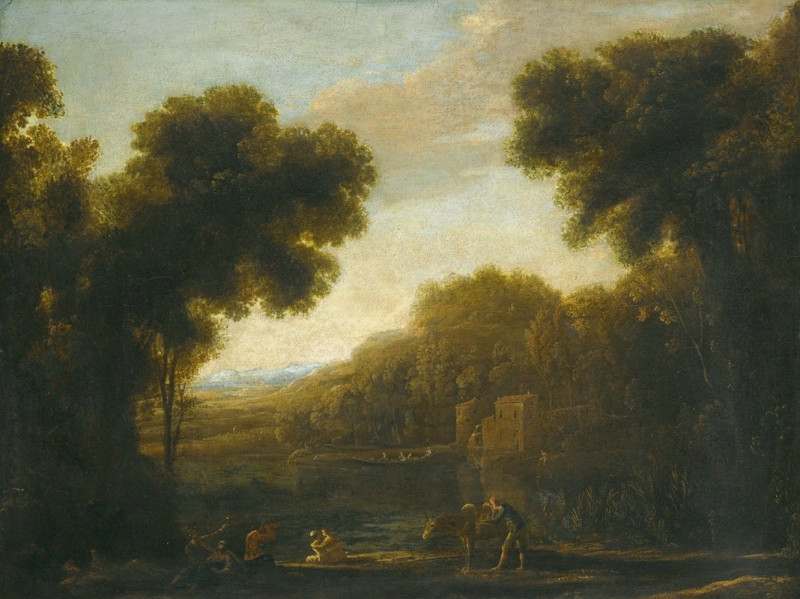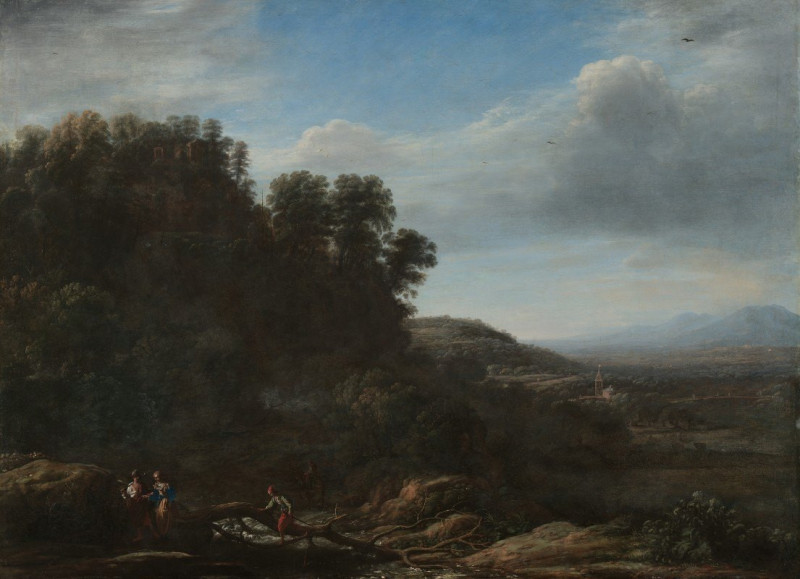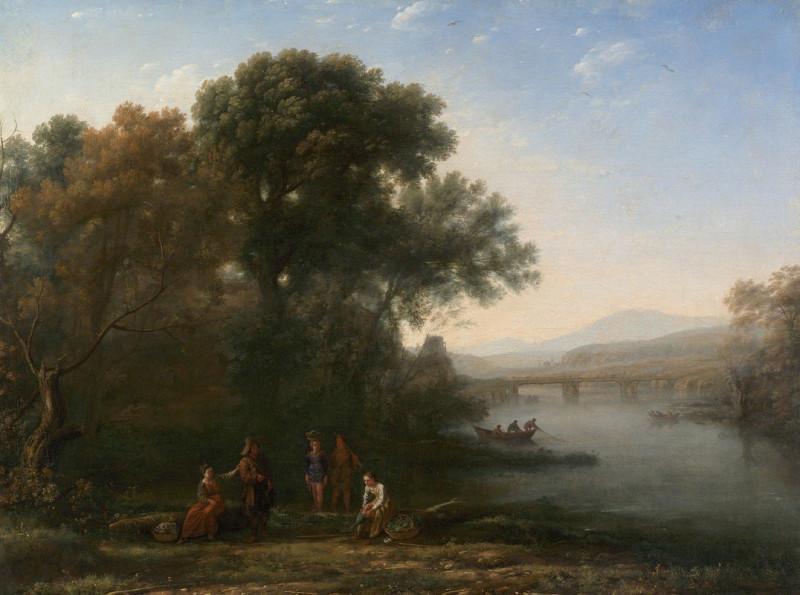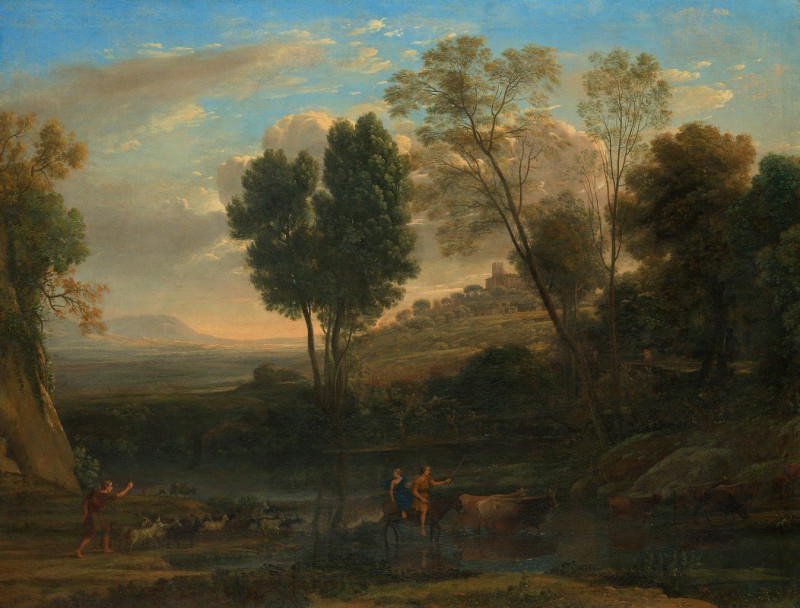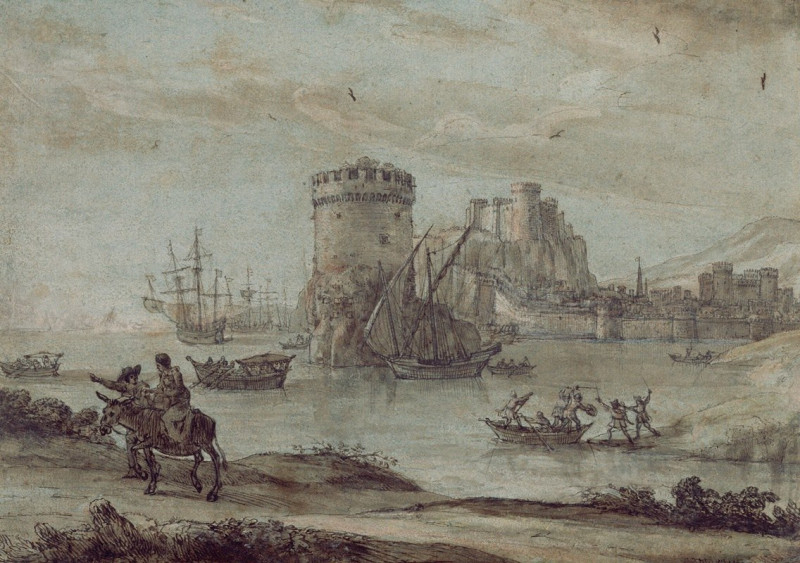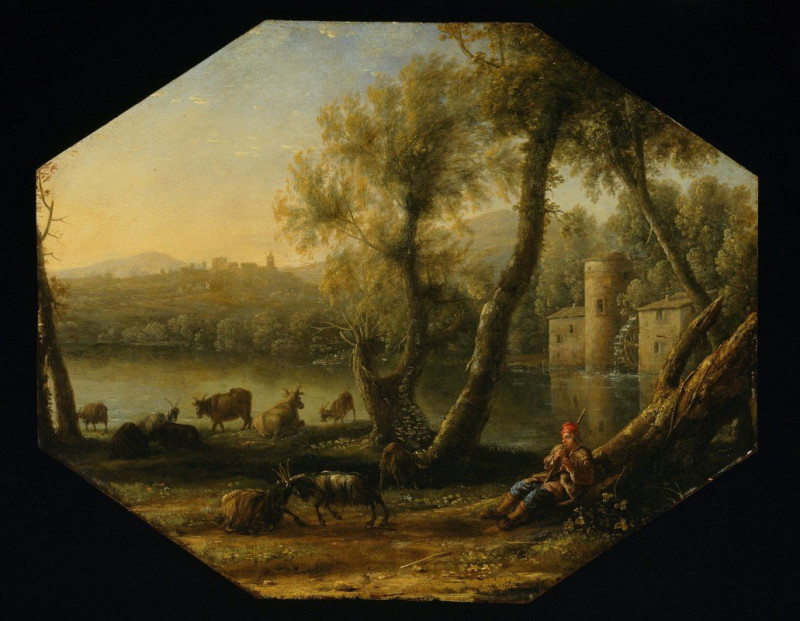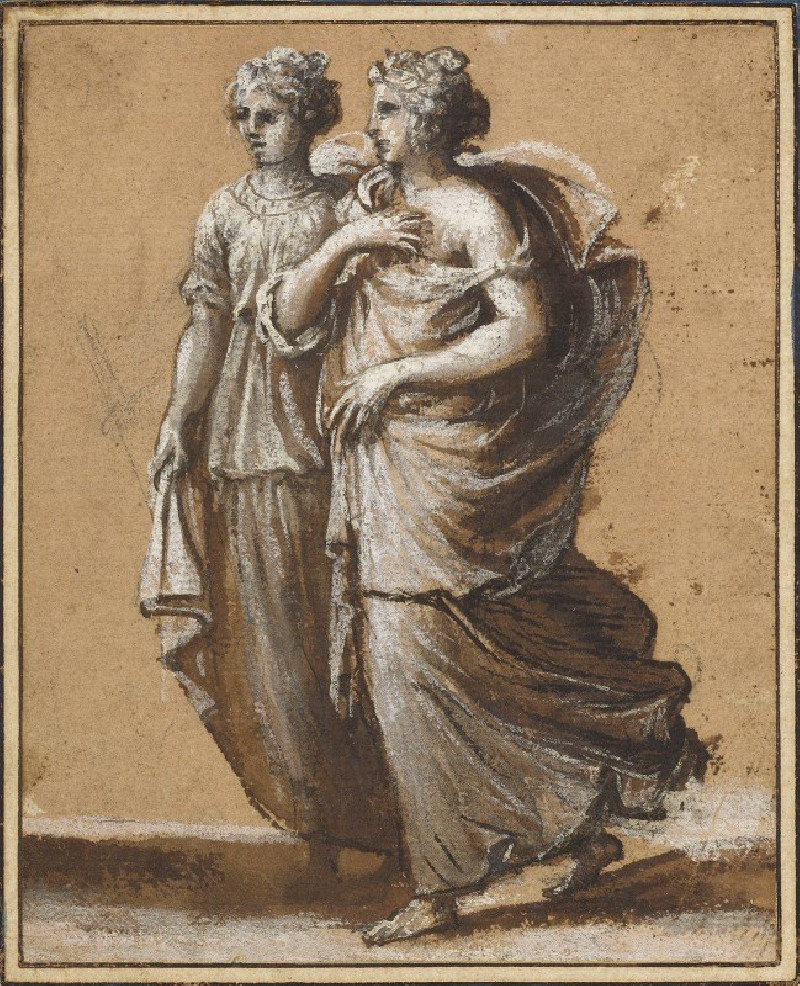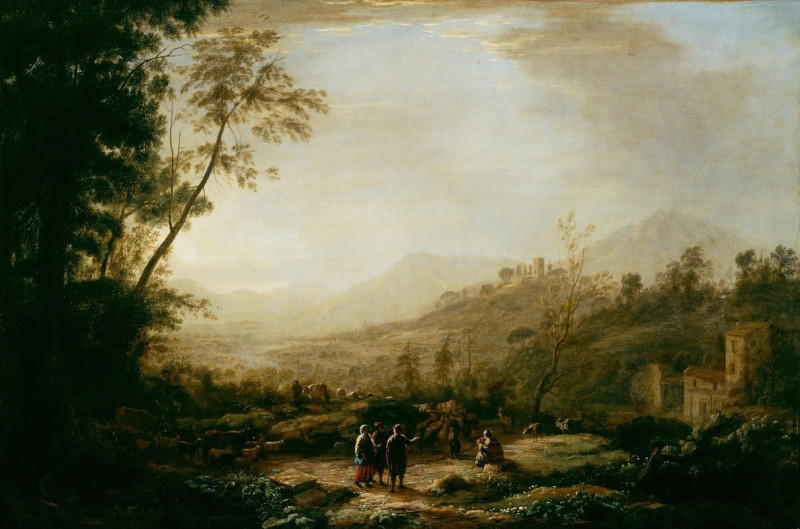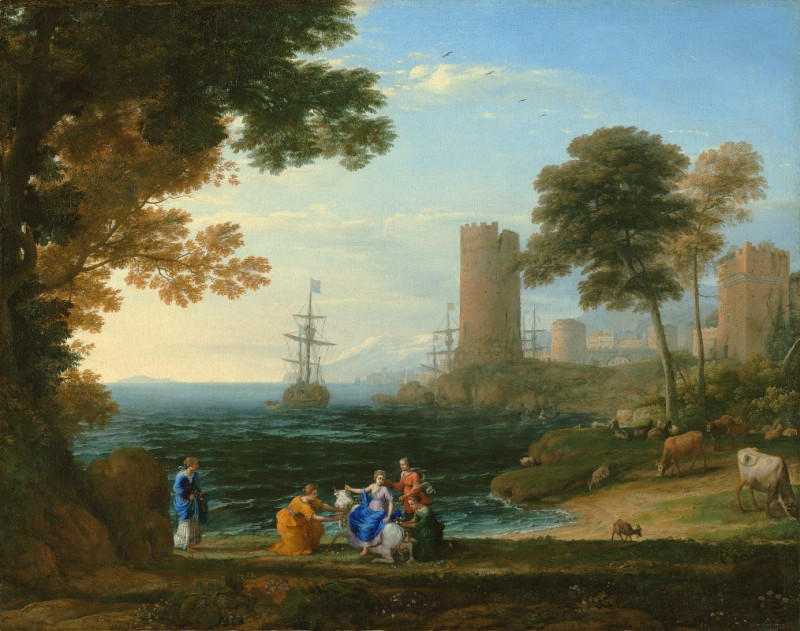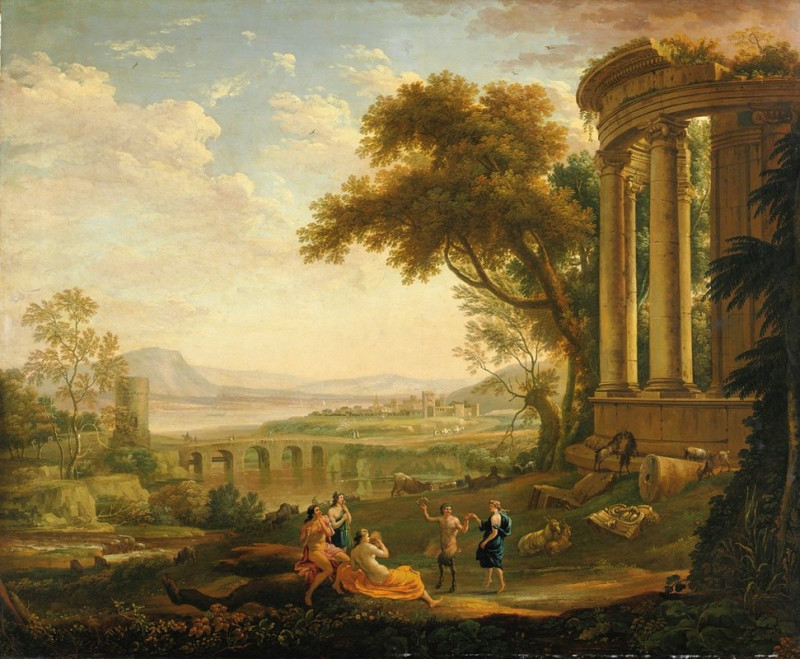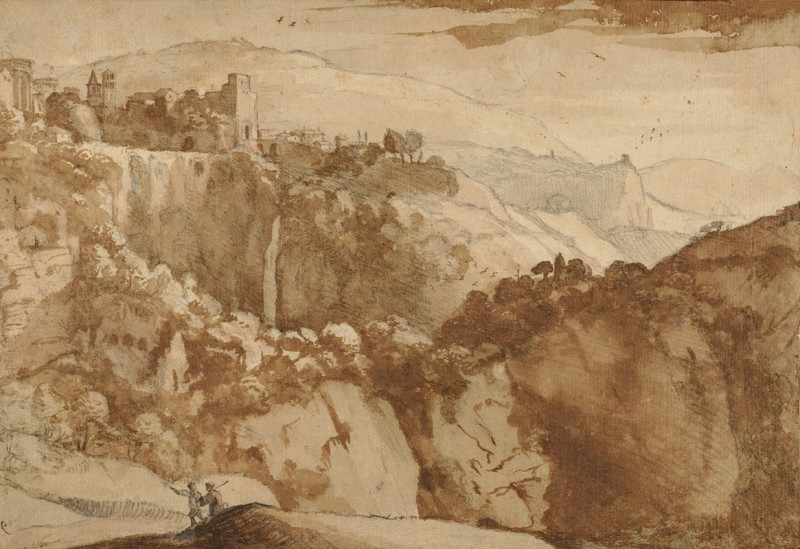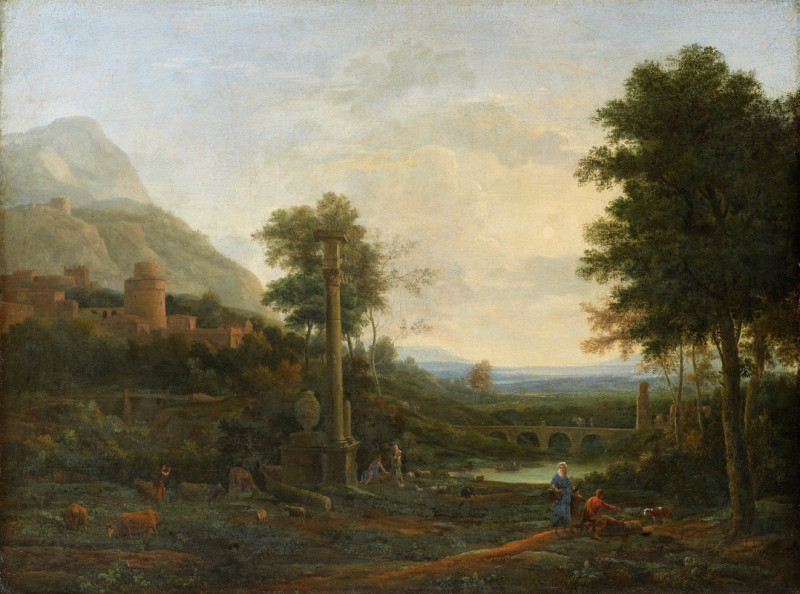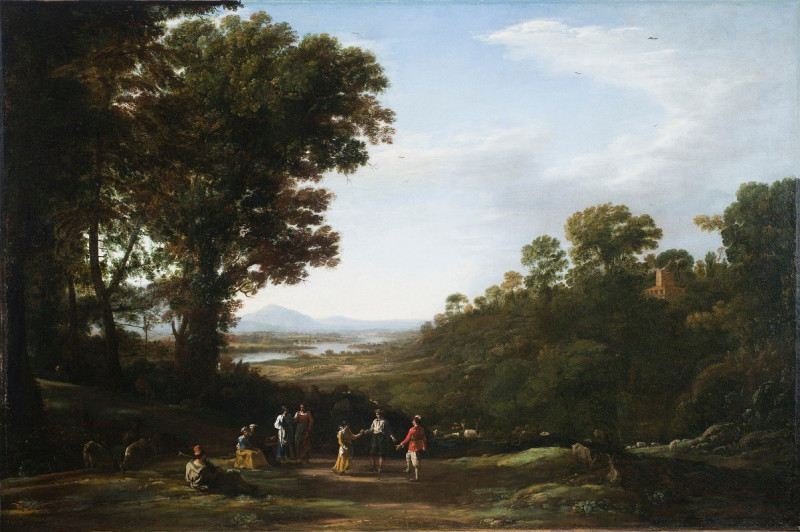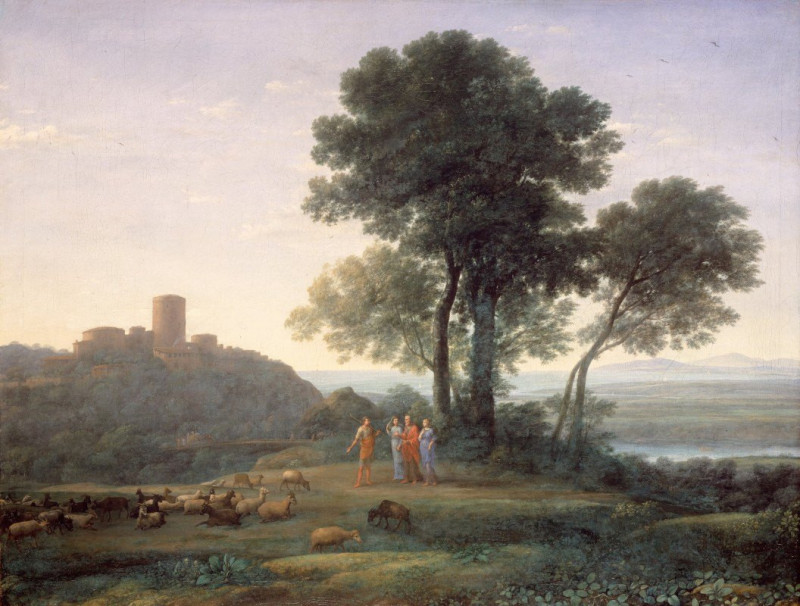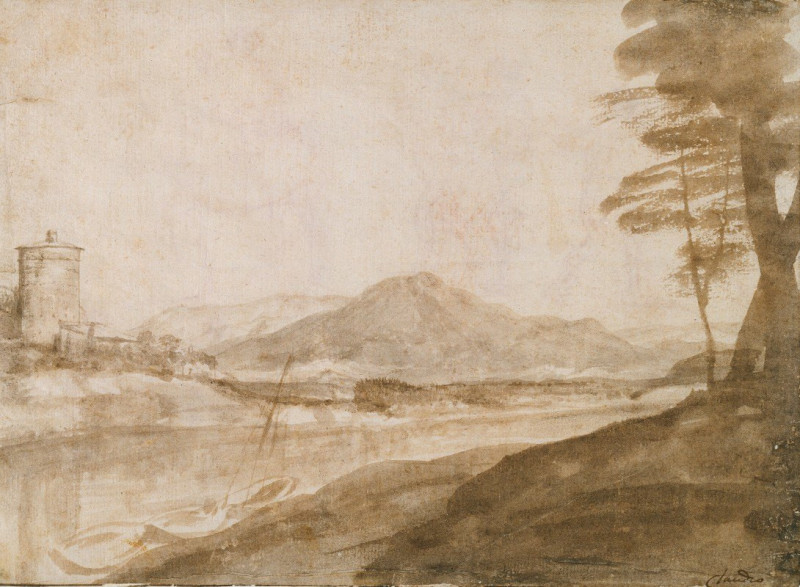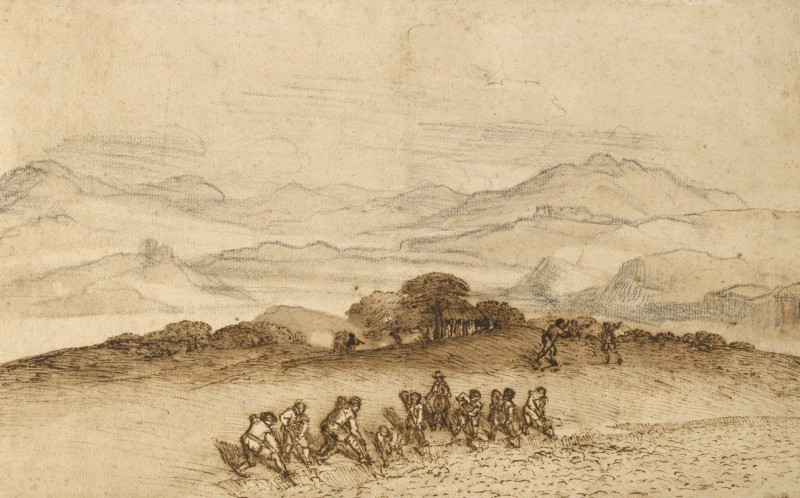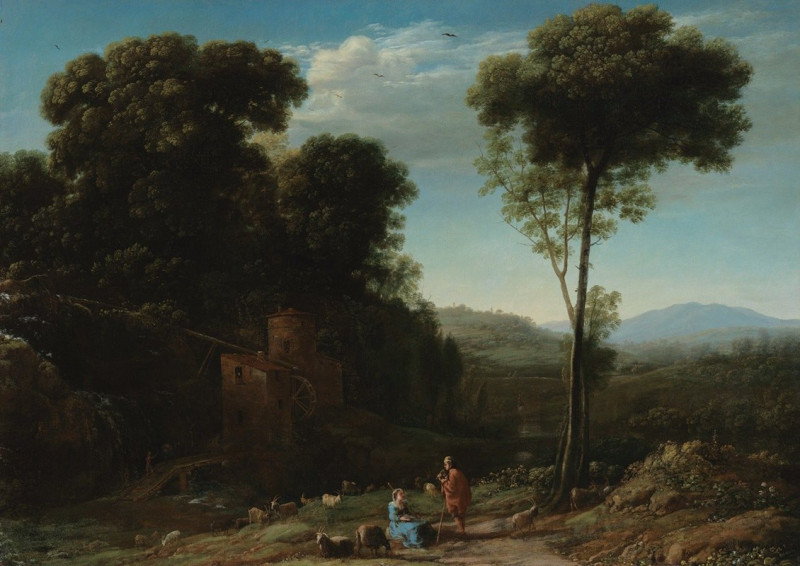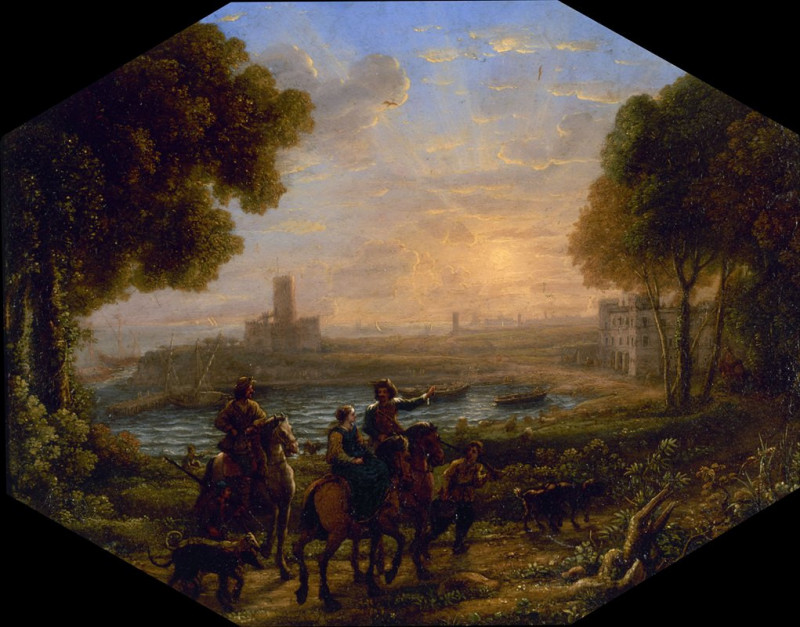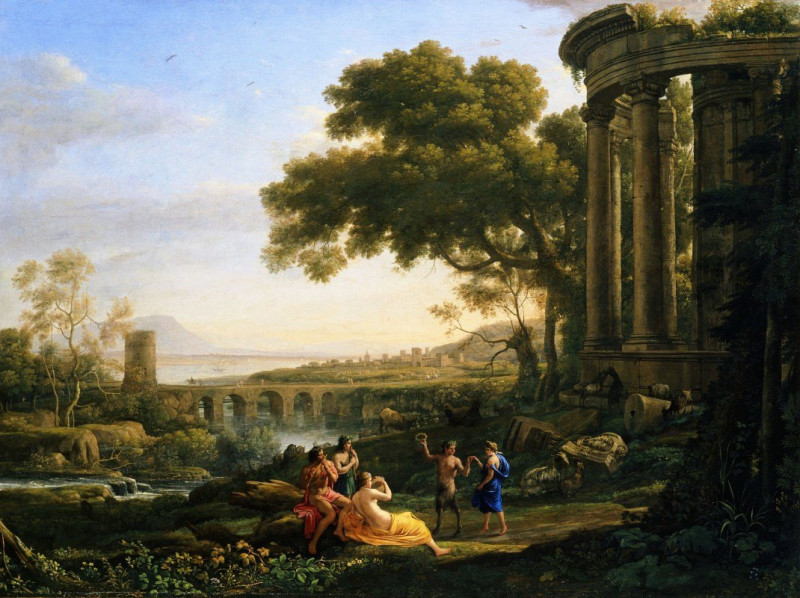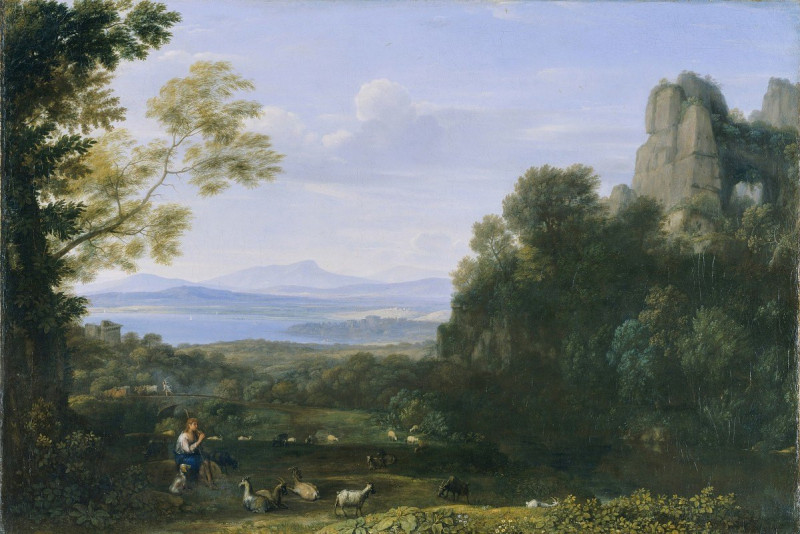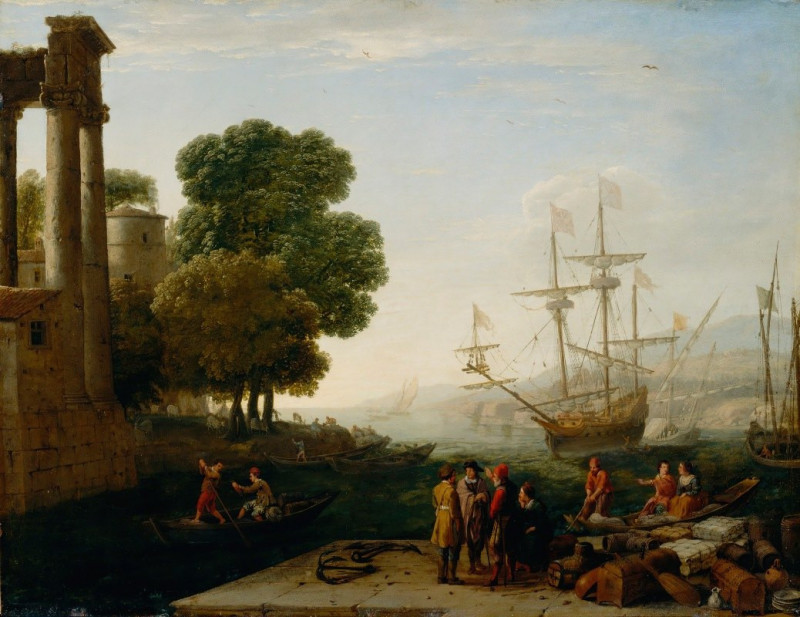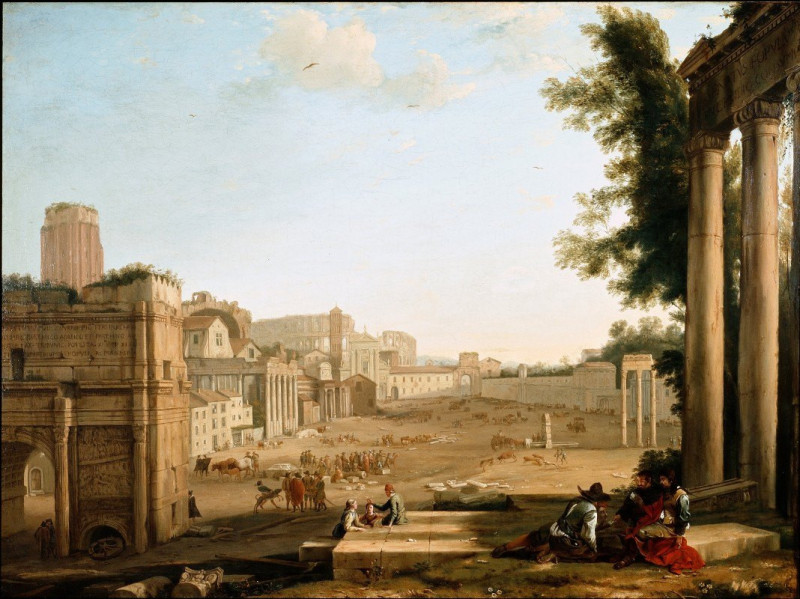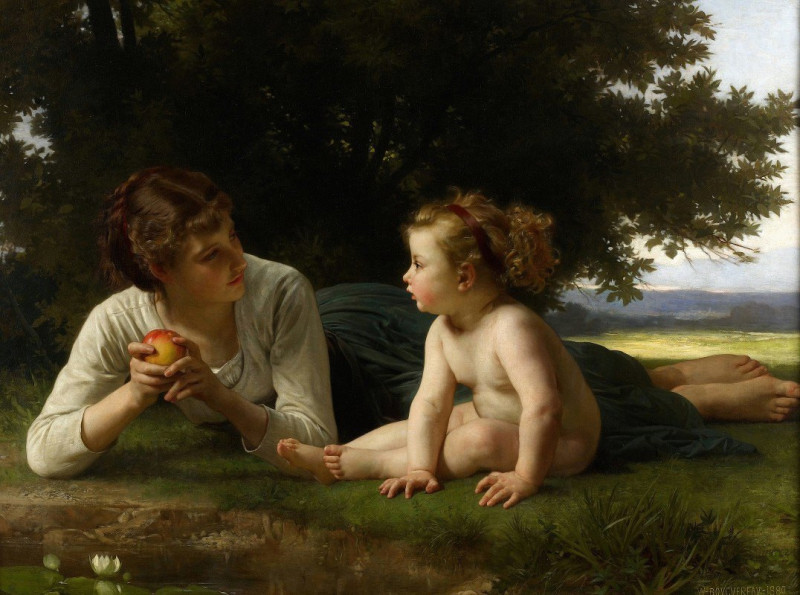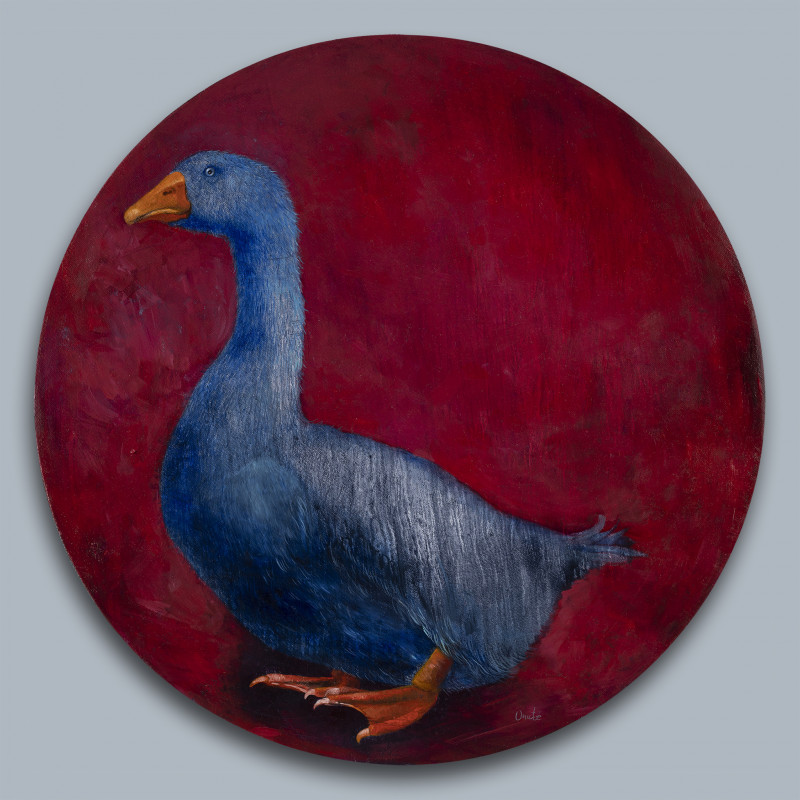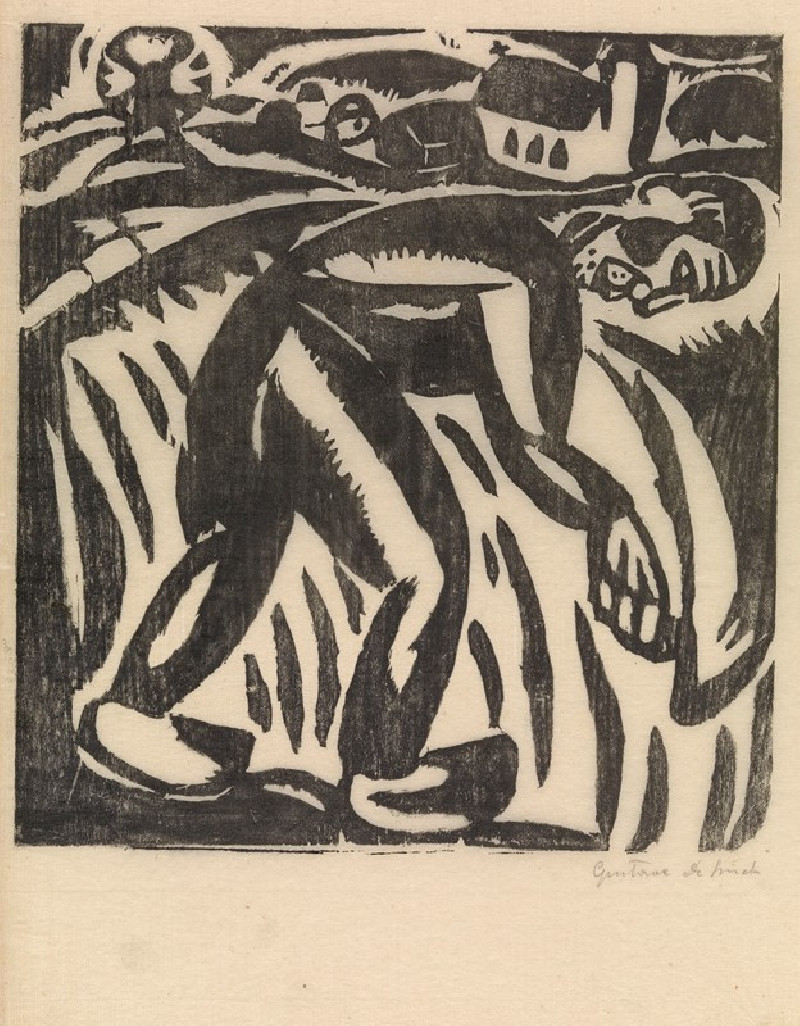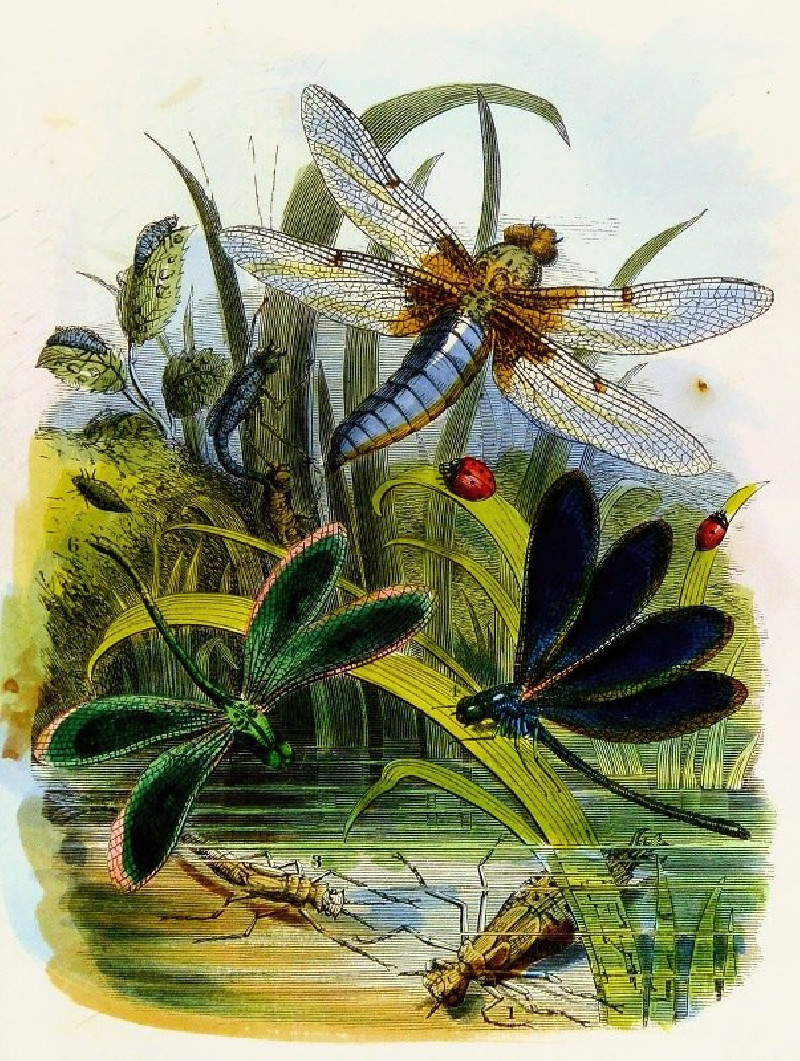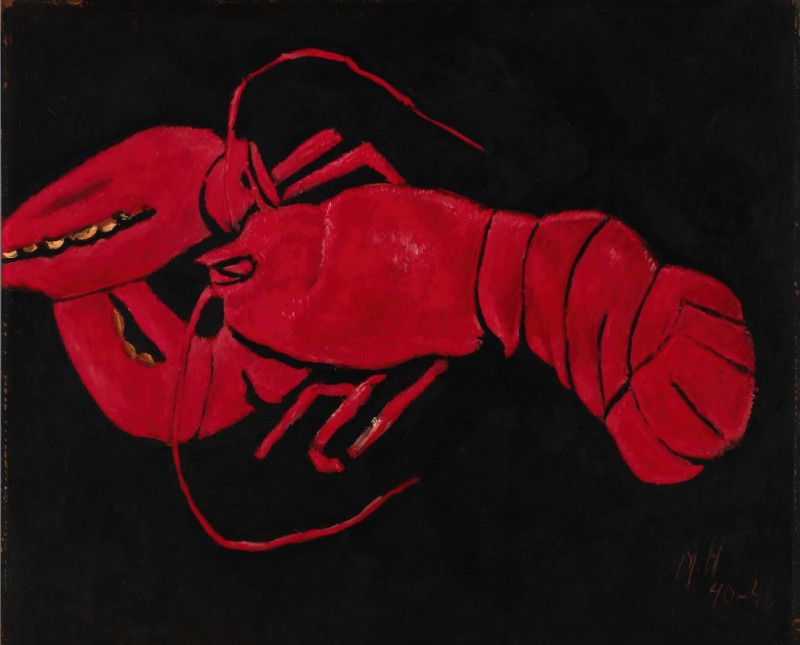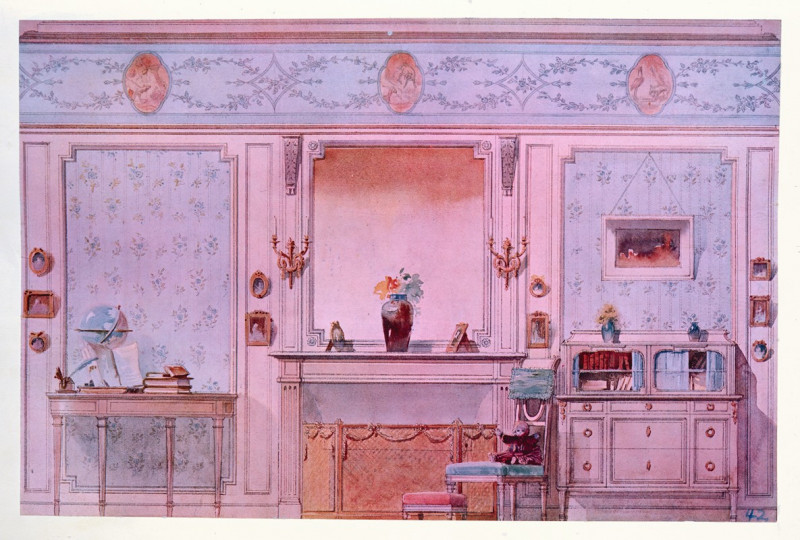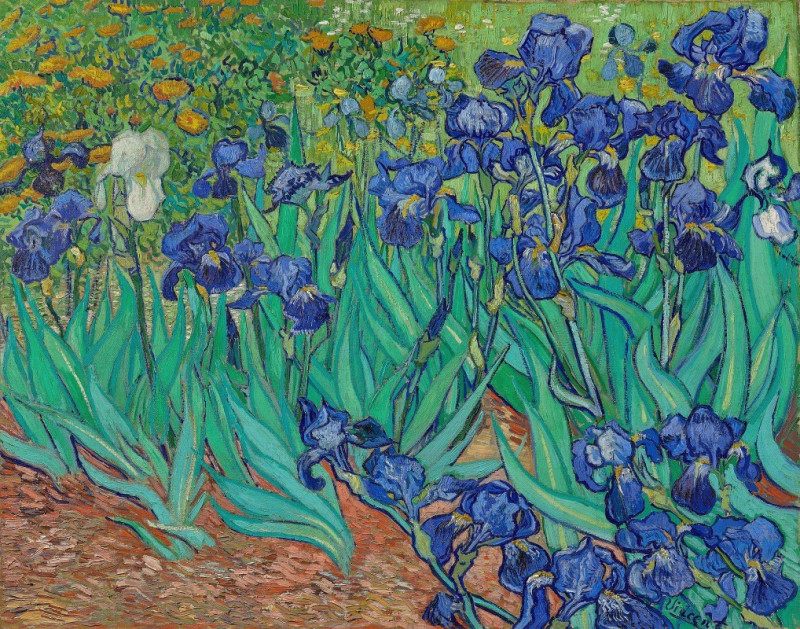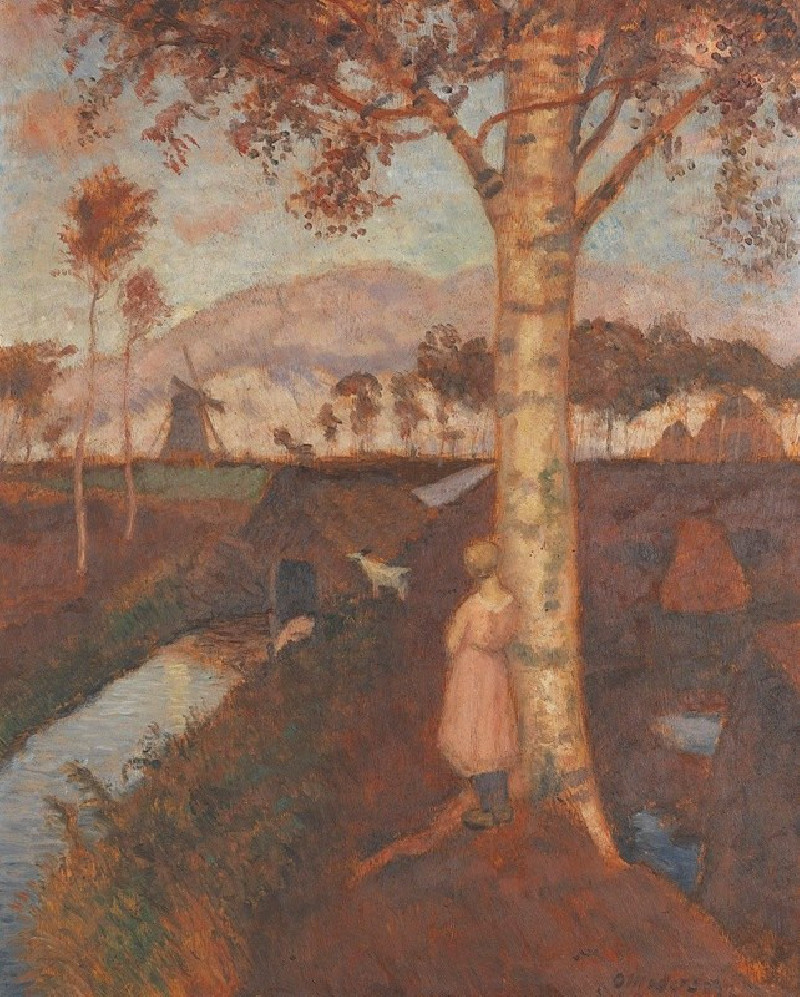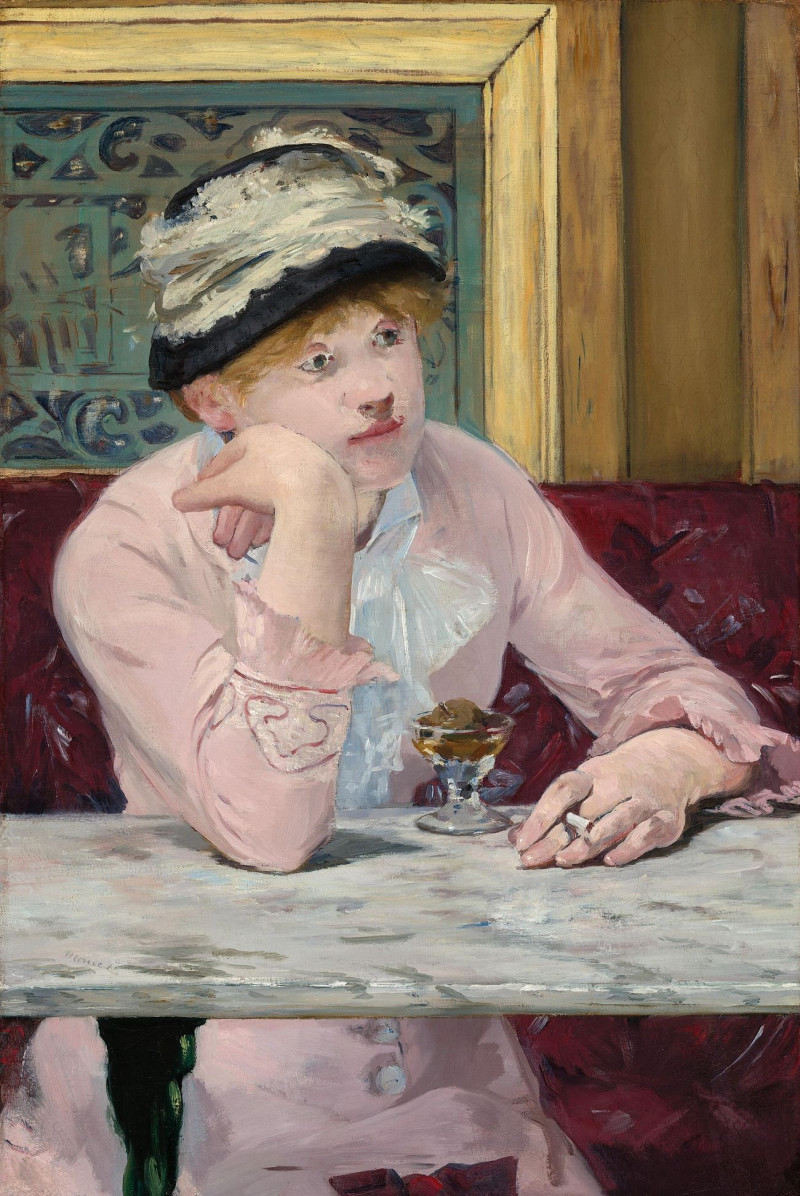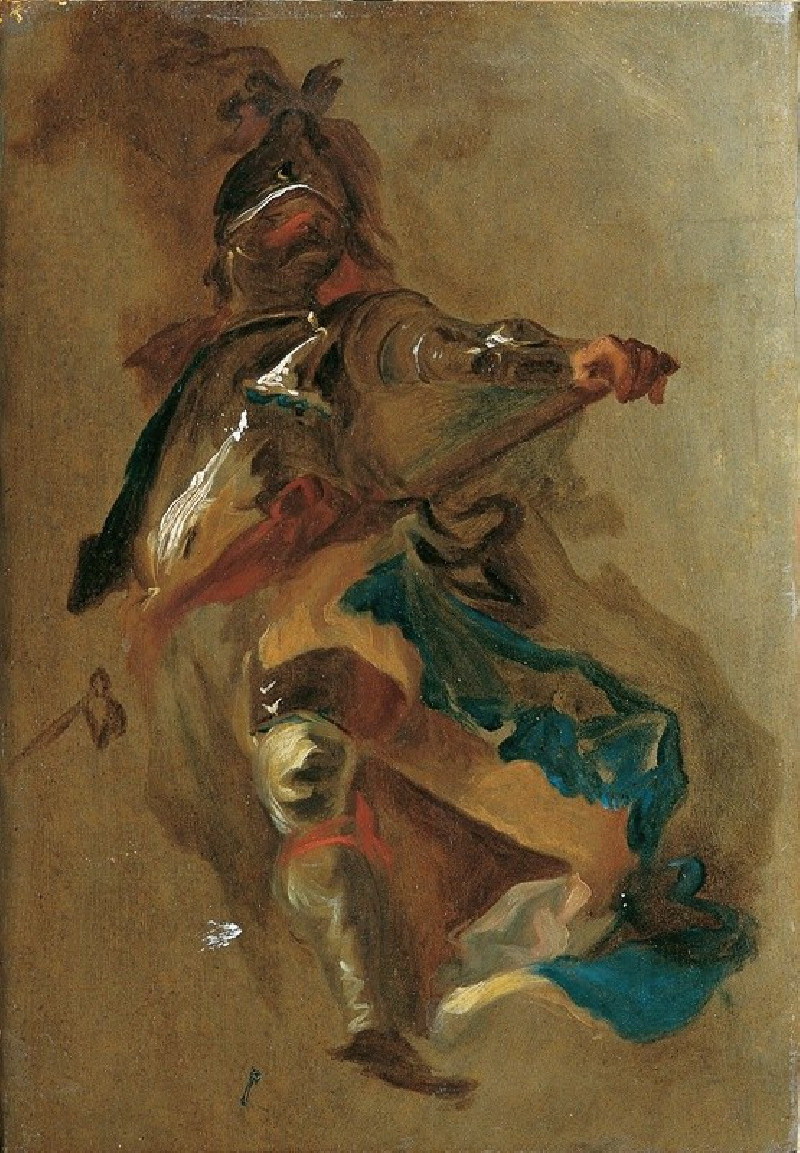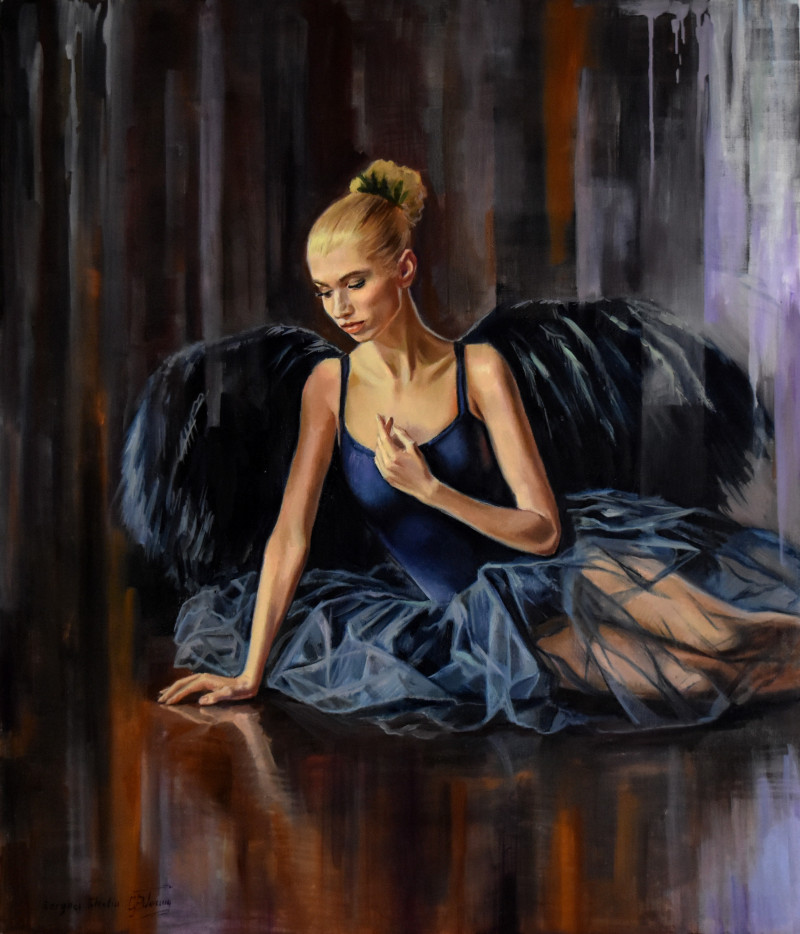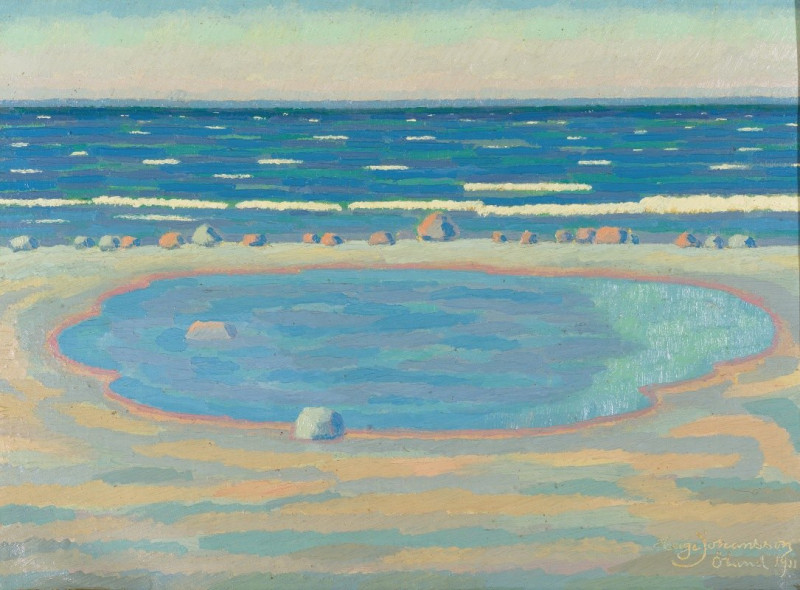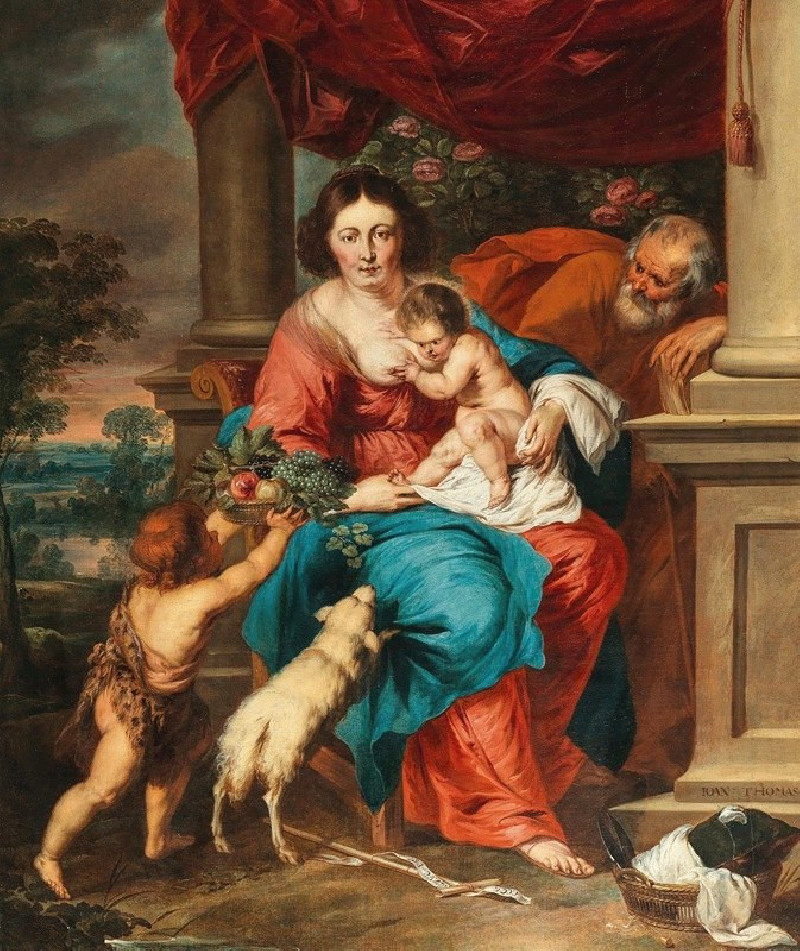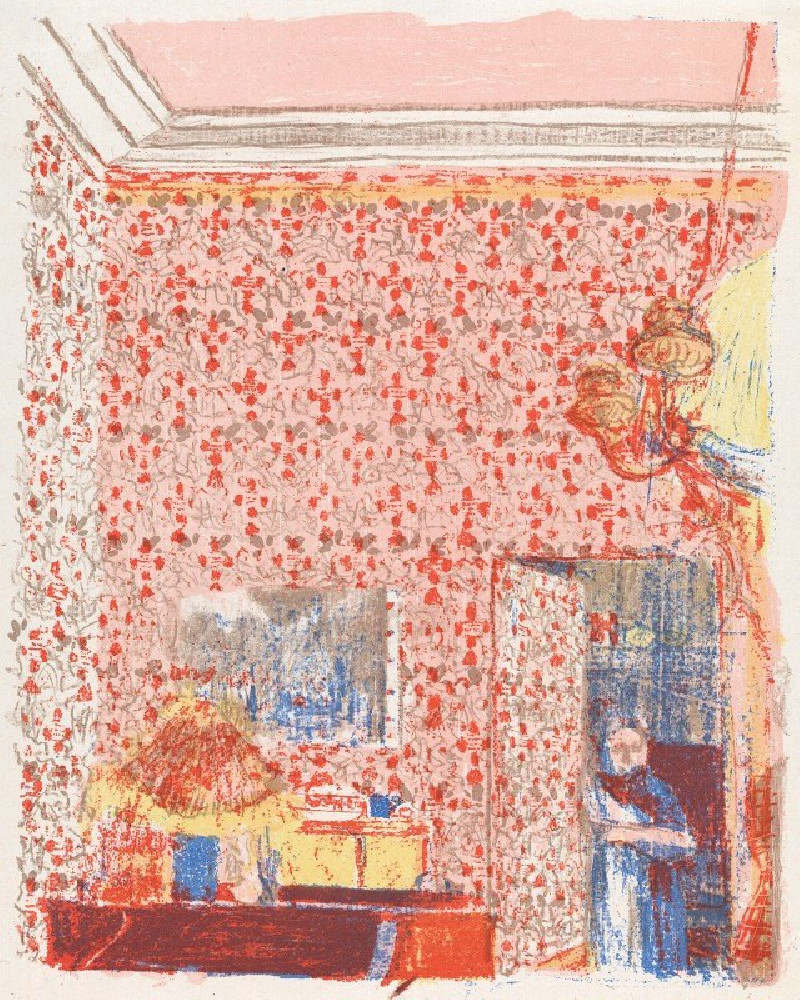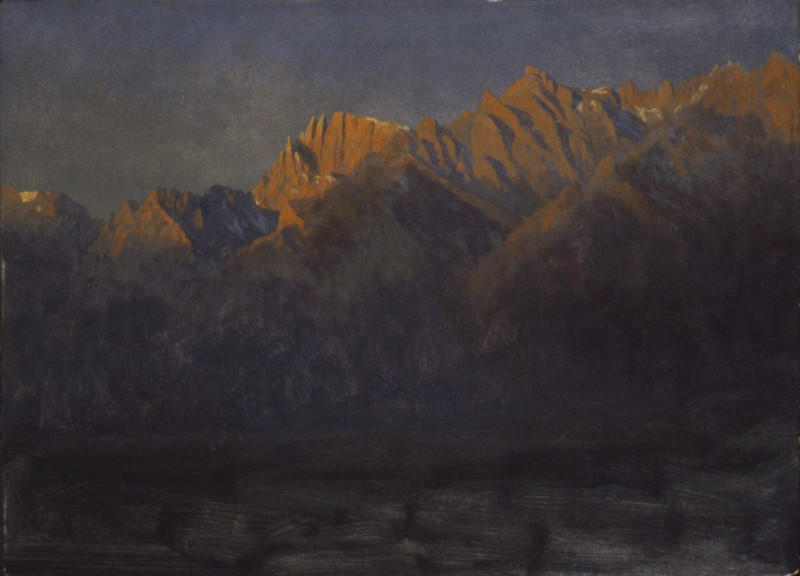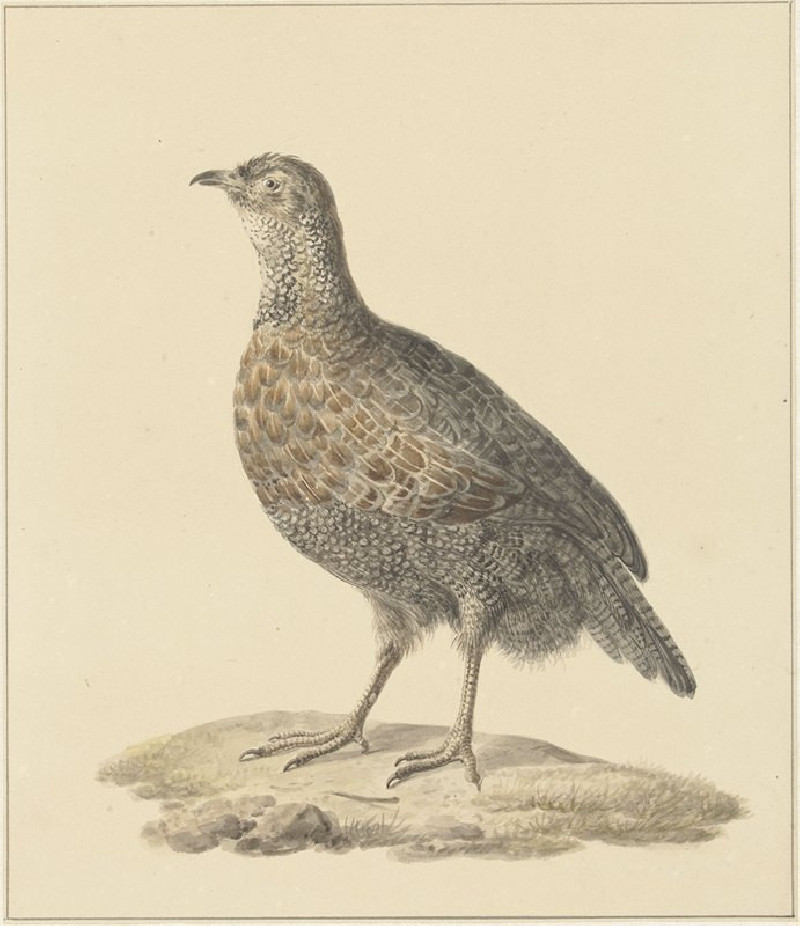Landscape with Sheep (ca. 1648)
Technique: Giclée quality print
Recommended by our customers
More about this artwork
In the picturesque composition "Landscape with Sheep" by Claude Lorrain, one is immediately transported into a tranquil, bucolic scene that beautifully exemplifies Lorrain's mastery in landscape painting. This artwork, dating back to around 1648, embodies the quintessential elements of the classical landscape that Lorrain is renowned for.Set under a vast, expansive sky, the scene is filled with gentle sheep meandering and grazing in a softly delineated pasture. The artist's delicate handling of light and shadow cast through the trees adds a lush, almost palpable texture to the foliage, enhancing the depth and realism of the landscape. In the foreground, several sheep are distinctly illustrated, their forms captured with meticulous attention to detail and anatomy, suggesting Lorrain's keen observation of nature.The background fades into a subtle, atmospheric perspective, with hints of a pastoral village and rolling hills that merge seamlessly with the sky. The inclusion of tiny figures in the distance interacting with the flock adds a human element, connecting the viewer to the scene through the universal theme of pastoral life and its timeless rhythms.What is particularly captivating in this painting is Lorrain's use of a warm, harmonious palette, consisting primarily of earth tones that echo the natural world. The play of light, a signature element in Lorrain's works, brings life to the scene, making the landscape appear idyllic and the moment eternal."Landscape with Sheep" is not merely a depiction of rural life, but a poetic interpretation, inviting the viewers to reflect on the peace and simplicity of pastoral existence.
Delivery
Returns
Claude Lorrain (1600 – 23 November 1682) was a French painter, draughtsman and etcher of the Baroque era. He spent most of his life in Italy, and is one of the earliest important artists, apart from his contemporaries in Dutch Golden Age painting, to concentrate on landscape painting. His landscapes are usually turned into the more prestigious genre of history paintings by the addition of a few small figures, typically representing a scene from the Bible or classical mythology.

